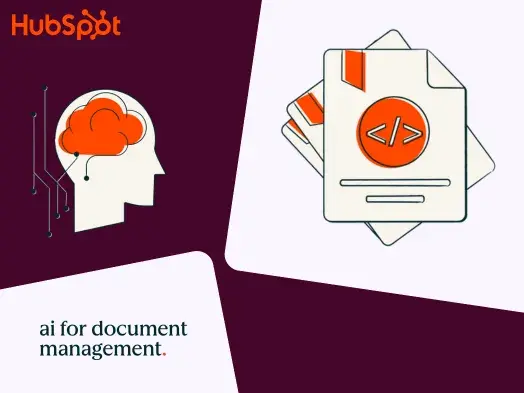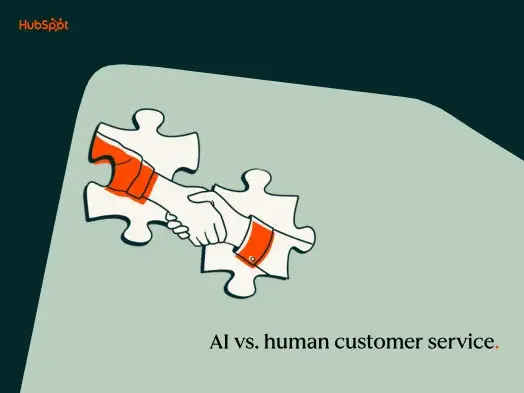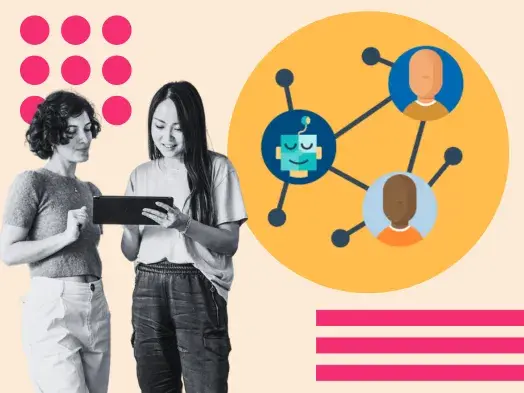Feeling curious about how service teams can use AI to save time and focus on more important tasks? Keep on reading as we uncover 12 ways CS teams can use AI. You’ll also get a list of the five best AI tools.
Table of Contents
- 12 Ways Service Teams Use AI to Save Time
- 6 Tools to Help You Save Time
- 6 Tips for Saving Time with AI
How Service Teams Use AI to Save Time
Customer service teams can leverage AI to enhance customer experience, save time on repetitive tasks, and reduce workload during busy times. Our research found that 78% of service pros strongly agree that AI helps them focus on more critical tasks.
Here are the most popular use cases mentioned by service professionals.

Now, let’s dive deep and see how else service teams use AI.
1. Automated Ticket Creation & Routing
Automated ticket creation is a process in customer service when incoming tickets are created and assigned to the most appropriate agents based on their skills, availability, and other factors.
Clients submit requests via various channels such as email, chat, contact forms, or phone calls.
Natural Language Processing (NLP) and predefined rules classify the information of those requests and prioritize tickets based on factors like priority level, customer type, request category, and more.
Once the system has classified and prioritized the ticket and determined the appropriate team or agent to handle it, the ticket is automatically assigned.
This reduces the manual effort to create and prioritize tickets, leading to faster response times and an improved customer experience.
2. Automated Email Responses
AI-powered automated email responses can dramatically improve agents’ efficiency by instantly acknowledging to the customer that their inquiry has been received.
Automated email systems use predefined rules and logic to determine how to handle incoming emails. Rules can specify which templates to use, which knowledge base articles to reference, and how to route emails to the appropriate personnel or departments.
Since AI provides automated responses that contain generic content, agents don’t waste time drafting individual messages or checking each email manually.
You can use Intercom’s Fin AI chatbot to provide accurate answers and dramatically reduce support volume. Powered by OpenAI, it generates answers based solely on your support content, ensuring that the information is not misleading or off-topic.

3. Robotic Process Automation
Robotic process automation (RPA) is a form of software technology used in conjunction with humans to automate repetitive tasks. Based on AI technology, it can mimic human-computer interactions and complete numerous error-free tasks at high volume and speed.
In customer service, agents can leverage RPA to automate data entry tasks, such as updating customer records, logging details, retrieving information from CRMs, generating invoices, or processing payments. This frees up agent time so they can tackle more complex tasks.
4. IVR Automation
AI-powered interactive voice response systems allow incoming callers to access information with pre-recorded messages. In other words, customers can request information without speaking to an agent.
Using natural language processing (NLP) and machine learning (ML) technologies, IVRs create a robust self-serve experience. This not only reduces the workload on agents but also boosts customer experience as callers get instant, 24/7 answers.
5. Chatbots and Virtual Assistants
Chatbots and virtual assistants are some of the first AI tools used in customer service. They can interact with customers, provide answers to frequently asked questions, give troubleshooting steps, and go further by booking appointments and tracking orders. This enables 24/7 availability, as customers can get support even after regular business hours.
Also, advanced chatbots can use historical customer data to personalize interactions, such as addressing customers by name or recommending products or services based on previous interactions.
Interesting stats: 84% of customer service professionals believe that chatbots improve customer experience, while 46% of them say they offer a more personalized experience.
6. AI-Augmented Messaging
While chatbots are advanced these days, AI-augmented messaging is what makes them more personalized. One of the companies that offer AI-augmented messaging is LivePerson. This AI tool can work in tandem with chatbots to trigger human intervention when needed. It fosters collaboration between AI tools and human users rather than relying on AI operations solely.
The result? Customers receive more personalized content and aren’t frustrated when only bots speak to them. On the other hand, agents step in when their expertise and human touch are required, ensuring a seamless transition from automated support to human assistance.
![]()
7. Sentiment Analysis
With sentiment analysis, CS teams can analyze emotions and opinions based on text or voice inputs. It uses NPL to determine whether data is positive, negative, or neutral. This enables service professionals to understand customer needs without having to go over records to find areas for improvement manually.
For example, Grammarly’s tone detector uses ML and NLP algorithms to analyze your text based on word choice, phrasing, and punctuation to determine or adjust its tone.
8. AI Coaching
AI coaching tools have become invaluable for training new agents and improving their performance. For example, with Second Nature AI, you can create customized training paths based on agent strengths and weaknesses, thus reducing the onboarding time by 30%.
Using conversational AI, the tool provides a “virtual pitch partner” so agents can have actual discussions with sales/service reps.
AI solutions also assist agents with appropriate responses and scenarios based on the context of the conversation.
For example, if the customer expresses dissatisfaction or frustration, AI coaching tools, such as Cogito, can analyze and extract acoustic and voice signals in milliseconds to give agents cues on how to adjust their behavior.
9. Multilingual Support
AI systems make it easier to enable multilingual support and overcome the language barrier. They can easily detect the language that the customer is communicating in and then direct their query to a language-specific support channel or agents proficient in the required language.
Let’s not forget about multilingual chatbots. Quickchat, Wallu, and MagicChat are some of the most used multilingual chatbot builders. Powered by artificial intelligence, they can provide support in customers’ native languages.
Over 75% of customers are more likely to return if support is in their own language. What’s even more interesting is that over 60% of people can’t distinguish an automatically translated message from a human one.
10. Voice Analysis
Voice analysis AI, also known as voice recognition or speech analysis AI, is designed to interpret and understand human speech. By using NLP techniques, it can understand the context and intent behind words and then convert speech to text. Conversational Intelligence tools like Gong and Chorus rely on voice analysis AI to transcribe and analyze phone calls or demos to give sales/service reps tips.
As voice analysis can determine the emotional tone of a customer during a conversation, agents can adapt their responses and provide more personalized support. For example, SalesCopilot can detect potential objections from the customer (e.g., “It’s too expensive” or “The product is not a good fit for us”) and provide well-informed recommendations to the agent on how best to handle them.
11. Predictive Analytics
Predictive analytics tools like Xineoh use machine learning algorithms to forecast future customer behaviors, needs, and trends. For example, it helps service teams predict which products or services a customer is more likely to buy based on their browsing or purchasing history.
With this information, agents can allocate their resources more wisely and be prepared during peak service periods.
12. Automated Data Collection
AI data reporting allows service professionals to gain valuable insights into customer interactions, operations, and performance and gather real-time data in one centralized system.
AI can automate data collection from different channels, such as emails, calls, social media interactions, and chat logs, ensuring that agents get immediate access to key information, such as customer preferences, feedback, and inquiries.
For example, MonkeyLearn allows service professionals to gather, collect, and visualize feedback in one place. You can get instant insights with their text analysis and visualization studio and create custom charts with pre-made dashboards.

6 Tools to Help You Save Time
The AI market is expected to grow to almost 2 trillion U.S. dollars by the end of 2023. Not surprisingly, there are thousands of AI tools entering the market. How to choose the best ones? We’re here to help.
1. HubSpot Content Assistant
HubSpot’s AI content assistant uses OpenAI’s GPT model to unlock productivity and creativity, helping marketers, sales teams, and service professionals generate copy for blogs, social posts, marketing emails, and more. It can be natively integrated with the HubSpot products. You can toggle between manual and AI content creation.

To use the content assistant, fill in the form, describe what content you want, and then click “Generate.” In a few seconds, you’ll have your copy.

Get Started With HubSpot’s AI Tools for Free
Core Features
- Create personalized sales & marketing emails, blog post ideas, and outlines
- Create compelling CTAs
- Integrate with the other HubSpot products
Pricing: Free for HubSpot CRM users.
Best for: Creating a personalized copy for various channels.
2. ChatSpot by HubSpot
ChatSpot is a conversational CRM bot developed by HubSpot. With chat-based commands, you can send follow-up emails, pull reports, create new segments, automate lead generation, find new prospects, etc.

Core Features
- Automatically capture and transcribe conversations
- Seamlessly import contact and company information from spreadsheets
- Minimize manual data entry
Pricing: Free for HubSpot CRM users.
Best for: Automating repetitive tasks and pulling CRM reports.
3. Zendesk AI
Zendesk AI is an artificial intelligence-powered platform based on OpenAI’s technology. It assists customers in real-time, answering basic questions and suggesting help center articles, guides, etc.

Core Features
- Assign tickets to the most appropriate agents or teams with automated ticket routing
- Provide instant responses and assistance
- Assess customer sentiment to prioritize and manage issues
- Multilingual support
Pricing: You can access it with Suite Professional ($115 a month) and Enterprise plans.
Best for: Providing real-time support and handling queries effectively.
4. Hiver
Hiver's AI Bot, Harvey, uses NLP to enhance Hiver’s Gmail-based helpdesk capabilities. You can manage email support, live chat, knowledge base, phone, and WhatsApp support — right from Gmail, without switching tabs.

Core Features
- Identify and close conversations with the “Thank you detection” feature
- Automate repetitive tasks
- Multi-channel support
Pricing: The “Lite” package starts at $15 a user monthly, while the “Pro” and “Elite” packages cost $39 and $59, respectively.
Best for: Getting a multi-channel helpdesk on Gmail.
5. SentiSum
SentiSum’s powerful AI analyzes and tags every customer conversation across emails, chats, phone calls, and surveys and provides valuable insights such as sentiment, reason for contact, and more.

Core Features
- Automated tagging & reporting
- Sentiment analysis
- Support tickets auto-routing
- Monitor reviews & social comments
- 100+ languages supported
Pricing: The “Pro” plan starts at $2,000 a month. The “Enterprise” plan is available upon request.
Best for: Analyzing customer interactions and real-time reports.
6. Zenarate AI
Zenarate is an AI-powered agent coaching platform that helps develop confident, top-performing agents through voice, screen, and chat Simulation Training. Agents roleplay in life-like conversations and chat simulations before they engage with real customers.

Core Features
- Roleplay in natural language
- Real-life chat scenarios
- Video simulations
- Customized learning paths
Pricing: Available upon request.
Best for: Agent coaching and simplifying the onboarding process.
Bonus: Want to save at least one hour a day? In the episode below, Kipp Bodnar and Kieran Flanagan discuss more AI tools that are worth a try.
6 Tips for Saving Time with AI
Ready to give AI a go? Here are six actionable tips for saving time with artificial intelligence.

1. Auto-prioritize based on urgency, sentiment, and topic to resolve tickets faster.
Use AI to gather customer support data from various sources, such as emails, chat logs, and ticketing systems, in one centralized location. Then, using NLP algorithms, define priority criteria based on urgency, sentiment, and topic.
Use an automated routing system to point tickets to the most suitable support agents. Altogether, it helps service teams streamline ticket resolution, reduce response time, and enhance customer experience.
2. Create a comprehensive self-service knowledge base to encourage customers to find answers on their own.
Zendesk’s Customer Experience Trends report reveals that 69% of customers first try to resolve their issues independently and prefer self-service over contacting a support agent. So, build a robust knowledge base to reduce the workload on customer support teams and enable customers to find answers without relying on agent support.
Create well-structured, easy-to-understand guides, articles, and tutorials, and ensure that content is regularly updated to reflect changes in the product or service. HelpScout, Zendesk, and Stonly are some of the most popular self-service knowledge base tools.
Success story: Touch Systems, a Belgium-based software company, received around 300 phone calls per week, and most of the questions were identical. Furthermore, their internal documentation was disorganized, so customers couldn’t find exactly what they wanted.
To resolve the problem, the company partnered with HelpJuice to create a detailed knowledge base.
The result?
They noticed a 10% reduction in phone calls, plus their agents spend 30 minutes less per week searching for the right information they need.
3. Implement chatbots to handle customer inquiries and provide instant support.
Varma, a pension insurance company, identified that their agents spent a lot of time answering repetitive questions. After successfully implementing Getjenny’s chatbot, the company could save 330 hours per month, so two agents moved to other demanding positions. Over the past six months, the number of fully automated conversations went up by 80%.

Pro tip: When implementing chatbots, the first thing you should do is to clearly determine the tasks or use cases they will handle, such as answering FAQs, tracking orders, or troubleshooting.
Integrate the chatbot or virtual assistant with your CRM, ticketing system, and other databases to access customer data and provide personalized responses.
4. Forecast peak service hours and high-demand periods with predictive analytics.
Use predictive analytics to forecast future service demand, identify trends, and anticipate customer needs. This enables service teams to allocate resources wisely and adjust agent schedules accordingly to ensure they properly and timely handle all customer queries.
5. Get real-time insights into customer service performance with AI-powered reporting and analytics.
AI-powered analytics tools help optimize business processes and reduce manual errors. Notable examples of such tools include Tableau, Qlik, and Polymer.
Tableau is an interactive data visualization software company based on business intelligence. With their Service Overview Dashboard Starter, agents can monitor key metrics such as Average Response Time, Customer Satisfaction Score (CSAT), number of tickets, and cases.
They can also track service cases by status and representative, prioritize them, and drill down into individual cases in the CRM. This enables customer service managers to gain a crystal-clear view of the performance of past cases and identify areas for improvement.
![]()
6. Continuously monitor AI performance and make adjustments.
AI is always learning and evolving, and you need to monitor its performance regularly to ensure it’s aligned with your KPIs. Yes, you read it right. Set KPIs for your AI, not service teams. These could include accuracy rates, response times, customer satisfaction scores, or any other relevant metrics.
Regularly conduct audits to check the effectiveness of AI and make adjustments accordingly. Want to level up your AI game and unlock its full potential? Get started with HubSpot’s artificial intelligence tools.
Implement AI to save time in customer service.
AI is the present and future. Either you’re using it in various aspects of your business, including customer service, or you’re falling behind competitors.
Artificial Intelligence


.png?height=613&width=1920)





![How AI Can Unlock Customer Insights [+Expert Tips]](https://53.fs1.hubspotusercontent-na1.net/hubfs/53/customer-insights-ai-1-20241101-2082956.webp)



